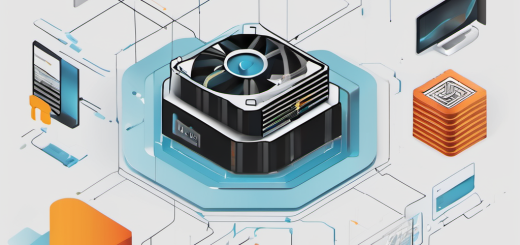How to Install Linux on Your PC or Laptop: A Complete Tutorial

Are you tired of using Windows or Mac as your operating system? Do you want to try something different? Something free? Then Linux might be the right choice for you. Linux is an open-source operating system that is free to use, modify, and distribute. It is popular among developers, programmers, and IT professionals.
But installing Linux on your computer might seem daunting at first. This guide will take you through the process of installing Linux on your computer step-by-step.
Before we begin, there are some things you need to check before installing Linux on your computer.
Check System Requirements
Before installing Linux, you need to check if your computer meets the system requirements. Different Linux distributions have different system requirements. Generally, Linux requires less powerful hardware than Windows or Mac. However, it still needs certain hardware specifications to run smoothly.
The minimum system requirements for most Linux distributions are:
- 1 GHz processor
- 1GB RAM
- 10 GB free hard disk space
- Graphics card and monitor capable of 1024×768 resolution
If your computer meets these requirements, you are good to go. If not, you might consider upgrading your hardware or choosing a lighter version of Linux.
Choose a Linux Distribution
There are hundreds of Linux distributions to choose from. Each distribution is tailored for a specific purpose or audience. Some popular Linux distributions are Ubuntu, Fedora, Debian, and Mint. Choosing the right distribution depends on your needs and preferences. Ubuntu is a good choice for beginners as it is user-friendly and has a large community for support. If you want something lightweight, you might want to try Lubuntu or Xubuntu. You might want to try Fedora or Arch Linux if you are a developer.
Once you have chosen the Linux distribution, you need to download the ISO file from the official website. The ISO file is a disc image containing the Linux distribution installation files.
Here is a quick link to the downloads:
Ubuntu:
- Desktop: https://ubuntu.com/download/desktop
- Server: https://ubuntu.com/download/server
Debian:
- CD/DVD Images: https://www.debian.org/CD/
- Network install: https://www.debian.org/distrib/netinst
CentOS:
- Consider CentOS Stream: https://www.centos.org/centos-stream/)
Fedora:
- Workstation: https://getfedora.org/workstation/download/
- Server: https://getfedora.org/server/download/
Red Hat Enterprise Linux (RHEL):
- (Requires a Red Hat subscription): https://access.redhat.com/downloads
Linux Mint:
- Main editions: https://linuxmint.com/download.php
openSUSE:
- Leap: https://get.opensuse.org/leap/
- Tumbleweed: https://get.opensuse.org/tumbleweed/
Arch Linux:
- Direct download: https://archlinux.org/download/
Gentoo:
- Minimal installation CD: https://www.gentoo.org/downloads/
Slackware:
- Installation DVDs: https://www.slackware.com/getslack/
Estimated Market Share
- Ubuntu – 33.42%
- Debian – 16.21%
- CentOS – 13.62%
- Fedora – 3.26%
- Red Hat Enterprise Linux (RHEL) – 2.47%
- Linux Mint – 2.08%
- openSUSE – 1.07%
- Arch Linux – 0.62%
- Gentoo – 0.06%
- Slackware – 0.02%
Note that these market share estimates may vary depending on the source and methodology used to obtain them and may change over time. Additionally, many other Linux distributions are not as widely used but may be popular among certain communities or industries.
Step 1 – Prepare Your Bootable USB Drive
Download the ISO: Head to the official website of your chosen Linux distribution (like Ubuntu, Fedora, etc.) and download the ISO file for the latest version. Make sure you select the correct version for your computer’s architecture (usually 64-bit). Choose a USB Creation Tool:
- On Windows: Rufus is a popular and reliable choice. Download it from the official Rufus website.
- On macOS: Balena Etcher is a user-friendly option. Download it from the official Balena Etcher website.
Format the USB Drive: Before you start, it’s a good idea to format your USB drive to ensure it’s empty and properly formatted. You can usually do this by right-clicking on the drive in your file explorer and selecting “Format.” Create the Bootable Drive:
- Insert your USB drive.
- Open Rufus or Etcher.
- Select the downloaded ISO file.
- Choose your USB drive from the list of devices.
- Double-check all the settings.
- Click “Start” or “Flash!” The tool will now copy the ISO to your USB drive and make it bootable. This might take a few minutes.
(For VMs): If you’re installing Linux in a virtual machine, you can usually skip the USB drive creation and directly attach the ISO file to your virtual machine settings.
Step2 – Boot from USB Drive
Once you have created the bootable USB drive, you must boot your computer from it.
- Restart your computer

- Enter the Boot Menu: As your computer starts up, pay close attention to the screen. You’ll often see a message like “Press F12 for Boot Menu” or “Press Del to enter setup.” The exact key varies depending on your computer’s manufacturer. Press the indicated key quickly.
- Select the USB Drive: In the boot menu, you’ll see a list of bootable devices. Use the arrow keys to select your USB drive (it might be listed as “USB HDD” or something similar).
- Press Enter: Your computer will now start loading from the USB drive

Step 3 – Begin Installing Linux
- Welcome Screen: You’ll be greeted by the Linux distribution’s welcome screen.
- Choose your language.

- Choose your keyboard layout.

- Connect to the Internet

- At this point you can update your installer.

- Now you have a choice – automated install or interactive. In this example we will do an Interactive Install

- On the next screen, applications, choose extended applications

Here you can choose 3rd party applications like MP3 Players, Open Office and much more.
For a detailed Installation of the TIG stack – check out this procedure.
Step 4 – Choose Installation Type
Click next to sort out this disk.

There are two installation types: “Erase disk and install Linux” and “Install Linux alongside Windows/Mac”. The first option erases everything on your hard disk and installs Linux as the only operating system. The second option installs Linux alongside your current operating system, allowing you to choose which one to use during boot-up. Choose the installation type that suits your needs.
- Erase Disk and Install Ubuntu: This option will completely wipe your hard drive and install Linux as the only operating system. Choose this if you want a clean install and don’t need any existing data on your computer.
- Manual Installation
In this example we will choose Erase Disk and Install Ubuntu and press Advanced Features

Step 5 – Create Partitions
For simplicity, select LVM then click NEXT
If you want to manually configure your disks, you can do that here:
(Only for “Erase Disk” installations): You’ll need to divide your hard drive into sections called “partitions.”
- Root Partition (/): This is the main partition where Linux system files are stored.
- Swap Partition: This acts as virtual memory, helping your system run smoothly when your RAM is full.
- Follow the on-screen instructions: The installer will usually guide you through the partitioning process. You can often choose automatic partitioning or manually set up your partitions if you’re more experienced.
Step 6 – Set up a User Account

After creating the partitions, you need to set up a user account. This account is used to log in to the Linux system. Enter your name, username, and password. You might also be asked to set up a hostname (computer name). Once you have finished setting up the user account, the installation process will begin.
- Your Name: Enter your full name.
- Username: Choose a username for your account.
- Password: Set a strong password that you can remember.
- Hostname: This is like a nickname for your computer (e.g., “my-laptop”).
- Complete the Installation: The installer will now copy files to your hard drive and finalize the installation. This might take some time.
Now Set your TimeZone. If you are connected to the internet this will be done automatically.

Now Review your installation and click next to install


If you prefer to watch the console so you can see what the installer is doing just click the terminal icon

After Installation:
- Remove the USB Drive: Once the installation is complete, you’ll be prompted to remove the USB drive and restart your computer.
- Log in: You should now be able to log in to your new Linux system with the username and password you created!


Installing Linux might initially seem daunting, but it is not as complicated as it seems. With this guide, you can install Linux on your computer quickly. Remember to check the system requirements, choose the right Linux distribution, create a bootable USB drive, boot from the USB drive, and follow the on-screen instructions to install Linux. Once you have installed Linux, you will have a free and open-source operating system that is powerful, customizable, and secure.
Want to learn more Linux facts? Check out the rest of our Tech Quicky content!!




2 Responses
[…] Yes, you can install Linux in a dual-boot configuration, allowing you to choose which OS to boot into at startup. […]
[…] If you want an easy-to-follow Ubuntu Installation guide – check out our guide here. […]